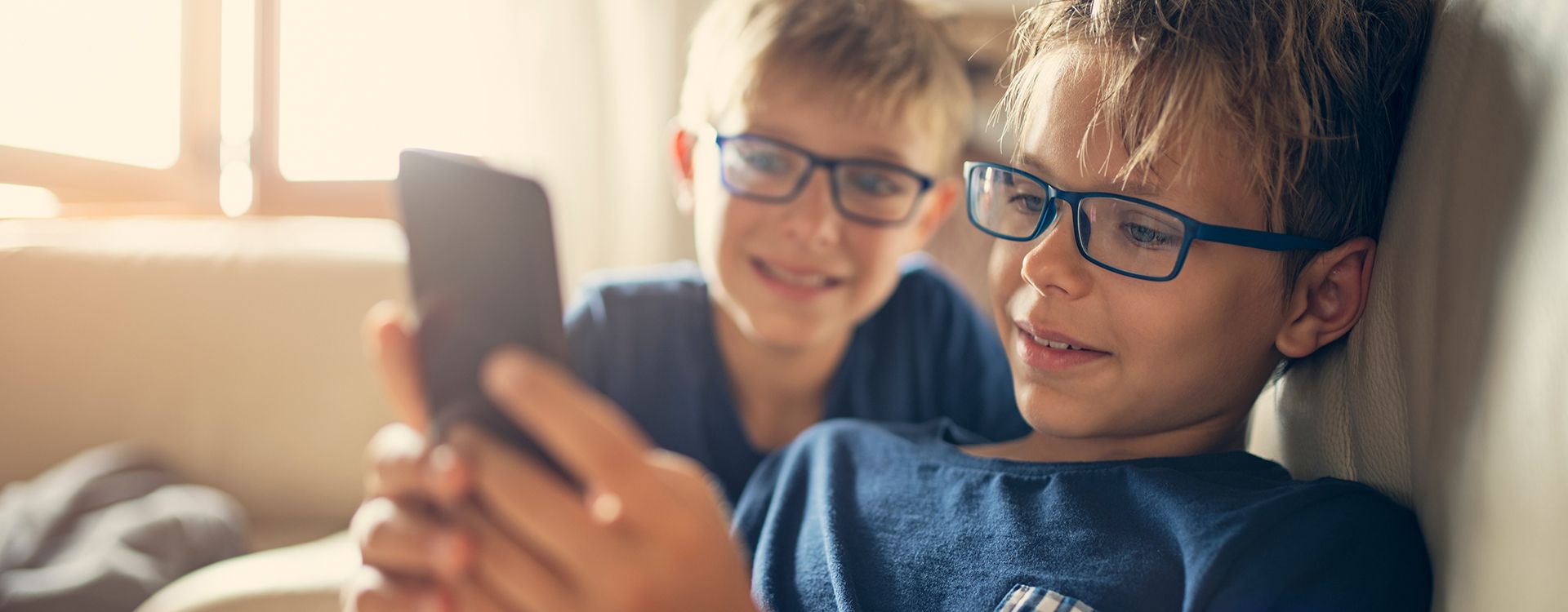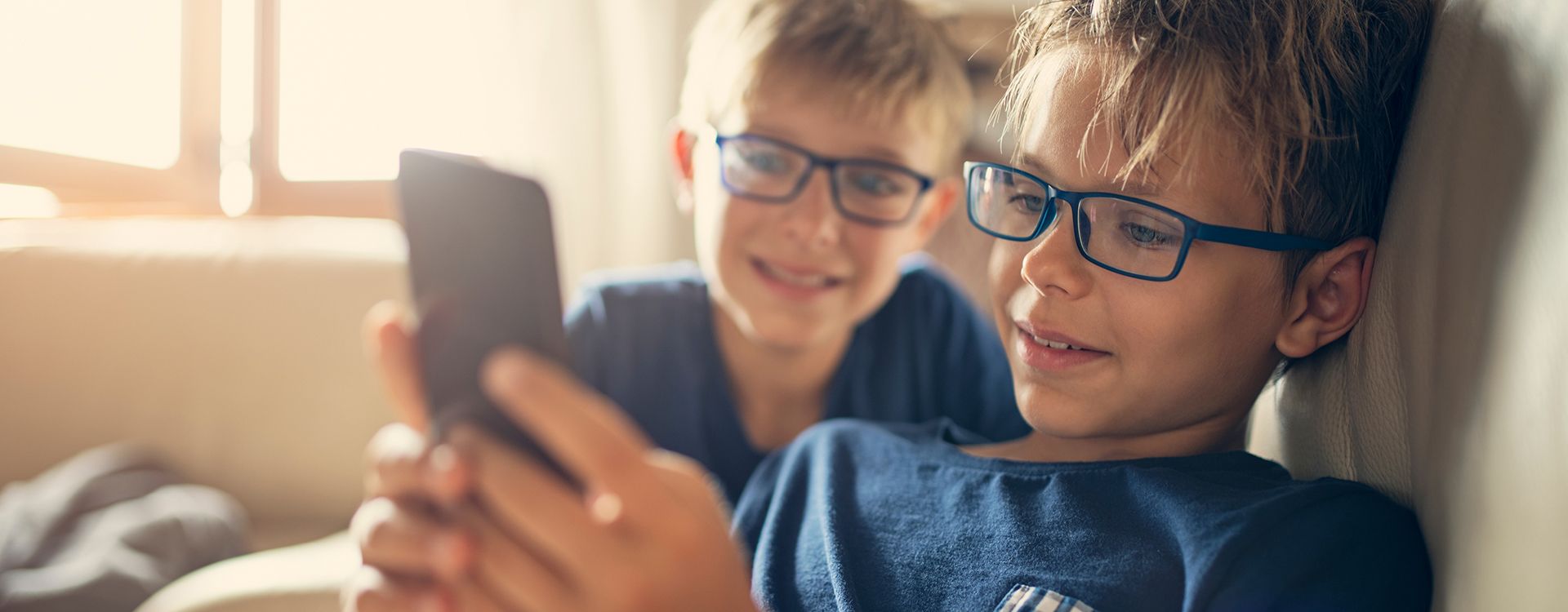More and more visual disorders in children and teenagers
Since the 1970s, the percentage of myopia in young people has literally doubled! In Europe and around the world, the various studies carried out all come to the same conclusion: myopia in children and adolescents is constantly rising. The Australian biologist Ian Morgan has noted that 50% of young people under the age of 20 in Europe, North America and Russia are short-sighted.
In Switzerland, Gabriele Thumann, head of the ophthalmology department at the University Hospital of Geneva, has found that myopia appears at a younger age than before, and it is no longer just hereditary: “We are seeing more and more babies, children and teenagers who have lifestyle-induced myopia, not heredity-induced myopia 1.” For example, the proportion of people who wear glasses or contact lenses increased from 59% to 64% between 1992 and 2012 due to the rise in myopia among young people aged 15 to 39.
Myopia in children: symptoms to look out for
The vision of a short-sighted person is blurred at a distance, but clear at close range. These early warning signs can be detected in children: they may squint when looking away, write or draw with their nose in their notebook, look too closely at the television or screens, and suffer from headaches.
Are our lifestyles at fault?
According to specialists, this increase in myopia is not only the result of heredity but also of an inappropriate lifestyle. Screens (TV, tablets, and smartphones) increase the time spent using close vision, while exposure to natural light decreases. Therefore, the daily activities of our children have a consequence on the development of their eyes.


Blue-violet light: an aggravating factor
Blue light is emitted naturally by the sun’s rays. In other words, it is part of the light spectrum. One of the components of blue light is blue-turquoise light (between 455 and 500 nm), which is essential for our bodies because it helps regulate biological rhythms, including the sleep cycle, and it has a positive effect on our well-being and mood. The other light present in blue light is the blue-violet light (between 380 and 455 nm), which is potentially harmful. Along with genetic factors and environmental factors, such as smoking and nutrition, blue-violet light is a potential cause of retinal ageing and therefore of AMD (age-related macular degeneration).
How to protect yourself:
The BlueProtect lens coating filters out blue-violet light and blocks UV rays. It acts selectively on wavelengths of between 400 and 450 nanometres, while maintaining the transparency of the lens and preserving colours. This protection is very beneficial for children. In fact, before the age of 10, the lens of the eye does not fully filter out UVA or blue-violet waves, allowing them to pass through more easily.
The BlueProtect coating is a non-invasive prevention method with no side effects
How can myopia be prevented?
Speaking in “Visimag – Spécial 30 ans ”, Dr. Pierre-François Kaeser, head of the Strabology and Pediatric Ophthalmology Unit at the Jules-Gonin Ophthalmic Hospital, states that “two environmental factors predominate in the appearance of myopia: the increase in the amount of time spent using close vision, on a screen or reading, and the decrease in time spent outdoors.” He advises parents, children, and teens to “spend a minimum of one hour a day outdoors, limit time on screens or smartphones, and maintain a reading or working distance of 30 to 40 cm.”
What about surgery? According to Dr. Kaeser, surgery allows people to see better without glasses, but it does not correct an overly elongated eyeball, nor does it prevent the progression of myopia.
Limiting myopia to prevent other visual disorders
In Switzerland, the number of people suffering from hypermetropia, astigmatism, and presbyopia is also increasing. Yet, according to Gabrielle Thumann, the prevention of myopia from an early age remains a priority. “Anyone with myopia has an increased predisposition to conditions such as cataracts, glaucoma, retinal detachment, or macular diseases,” she says. When a risk of very high myopia – and therefore disability – is detected in a child, ophthalmologists can prescribe low-dose atropine drops to slow the growth of the eyeball, but only if the treatment is accompanied by one hour of daily outdoor time and a real reduction in screen time.
Solutions adapted to young people
Visilab advises you above all to reduce the time spent in front of screens as well as increase the time spent outdoors. In addition, certain new optical technologies can also slow down the development of myopia in children. Essilor Stellest lenses slow down myopia progression by significantly reducing the elongation of the eye, which is what causes myopia. Thanks to these innovative lenses, a reduction of nearly 67% in myopia progression (compared to conventional single vision lenses) has been observed. These lenses are available as prescription lenses and sun prescription lenses.
There are also the Coopervison MiSight daily disposable soft contact lenses that slow down myopia progression by working in a similar way as the spectacle lenses mentioned above.
Finally, orthokeratology offers an effective alternative to wearing glasses or contact lenses during daytime. This technique consists in wearing custom-made lenses while sleeping in order to obtain normal daytime vision. It can be used to correct myopia, astigmatism, and hyperopia.
Our opticians will be happy to help you find the best solution for your child’s needs.
Reimbursement through compulsory health insurance
Since 1 July 2024, compulsory health insurance has covered the costs of myopia control for children up to the age of 21 with CHF 850.- per year for glasses with lenses for myopia control and for specific contact lenses if they are prescribed by an ophthalmologist and the legal conditions are met.





